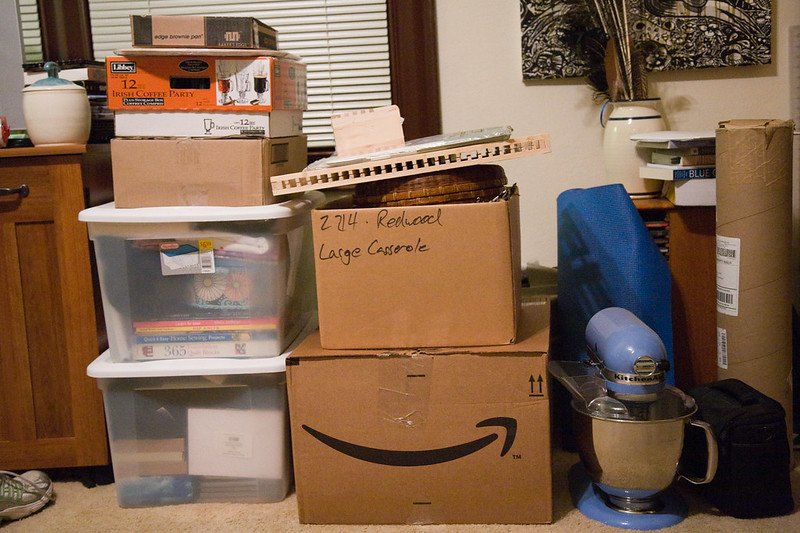Table of Contents Show
If you’re planning a move, you’re probably feeling a mix of excitement and overwhelmed. When it comes to moving, there’s a lot to think about — and you need to start organizing your new space as soon as possible.

Whether you’re relocating for work, switching apartments, or leaving a bad situation in your current home, there’s a lot to consider when planning a move.
Preparing for a move can seem overwhelming, but moving successfully is all about getting organized. If you want to move successfully, check out these tips for enhancing your moving experience.
Make a Checklist
The checklist should include selecting a moving company, scheduling utilities, packing, sorting, and disposing of items, and unpacking at the new location. This ensures you are aware of all the little details that need to be taken care of so we can track your progress.
Create a budget and determine a realistic timeline for the move. It’s important to factor in any costs, such as transportation fees and packing supplies.
Once the budget and timeline are set, plan out each step of the move, including scheduling the movers, packing, traveling, and unpacking. If you need help moving, utility installation, or any other service, make sure to schedule in advance.
Read Also:
Find Where You’d Like to Relocate
Consider the factors that matter to you, such as climate, job market, cost of living, safety, and quality of life. Researching different cities’ advantages and disadvantages can help you find the right place for you. Consult with family, friends, and co-workers to get their perspectives.
Once you’ve found the place you would like to relocate to, you’ll need to start making arrangements such as booking moving services, finding a place to stay, arranging to have your belongings shipped, and so on.
Consider the costs associated with moving, including any expenses related to housing deposits, utilities, and storage fees.
Place Your Home on the Market
This step is critical as it will help ensure that you get the highest return possible on selling a house so that you can proceed with the other costs and expenses associated with a move.
Take the time to research the local housing market so that you’re aware of what the current trends and pricing look like. This will help you decide on a realistic and competitive listing price.
Then, find a qualified and experienced real estate agent to work with who can help you market the home, find potential buyers, and negotiate the sale of the home. Make sure to get an accurate appraisal of the home’s value before putting it on the market in order to help ensure a successful transaction.
Find a New Home to Purchase
Start researching prospective neighborhoods and attending open houses. A smart move is to get pre-approved from a lender before looking for a home to purchase.
Once an area is identified, it is important to assess options in terms of room size, exterior maintenance, and amenities. If possible, speak to current homeowners in the neighborhood to get an accurate lay of the land.
Declutter Your Current Residence
Begin by sorting through each room in the house and determining what you would like to keep, donate, and discard. Make sure to pay close attention to items that can be more easily replaced at your new home, as well as those items which may require extra care to transport.
Once you have narrowed down the items that can be moved, begin to arrange them into boxes and organize them according to a packing list. Be sure to take special care when transferring important documents, such as bills and birth certificates, separately from the rest of your belongings.
Begin Packing
The first important step in packing for a move is creating an inventory list. This list should include all the items in the home that will require packing and moving.
Once the inventory list is created, begin packing items that are not necessary for everyday use. This would include seasonal items, décor, storage, clothing, books, and furniture. Be sure to label all the boxes to identify their contents.
Keep a separate box of essential items for immediate use. Arrange for the safe transport of more valuable items. Be sure to ask for packing specifications from the transporter to ensure the items arrive in good condition.
Arrange for a storage unit or ask a family or friend to store any items that won’t fit in the new home or that can’t be moved immediately.
Research and Hire a Moving Company
Start by searching online for local movers who offer the services you need, read customer reviews to get a better idea of what to expect, and compare rates.
Don’t be afraid to compare up to three or four moving companies before deciding on the one that is right for you. Another important step is to gather estimates and ask if any hidden fees may apply.
Once you’ve settled on a mover, make sure you understand the terms and conditions of the move and ensure that all paperwork is signed and in order.
Although it may seem tedious, these steps can help ensure a smooth move and make sure your belongings arrive safely, on time, and on budget.
Make the Move
Once you decide on a mover, you need to carefully review the contract to make sure you understand all of the terms. After that, you must decide what to take with you and what to leave behind. Then, you need to find a place to store or donate items you’re not bringing with you.
You have to start packing and get ready for the move. With the right knowledge and planning, your move can go smoothly and without issue.
Planning a Move Can Be Without Stress
The moving process can be daunting, but taking each step one at a time is the best way to make it easier. Start by gathering essential supplies, securing a new property, setting a budget, and getting the right professionals.
By following these moving tips, staying organized, and understanding the timeline, a smooth and successful move is within reach. Get started today and make planning a move stress-free!
If you find this article educational, make sure to browse our blog for more interesting reads.









